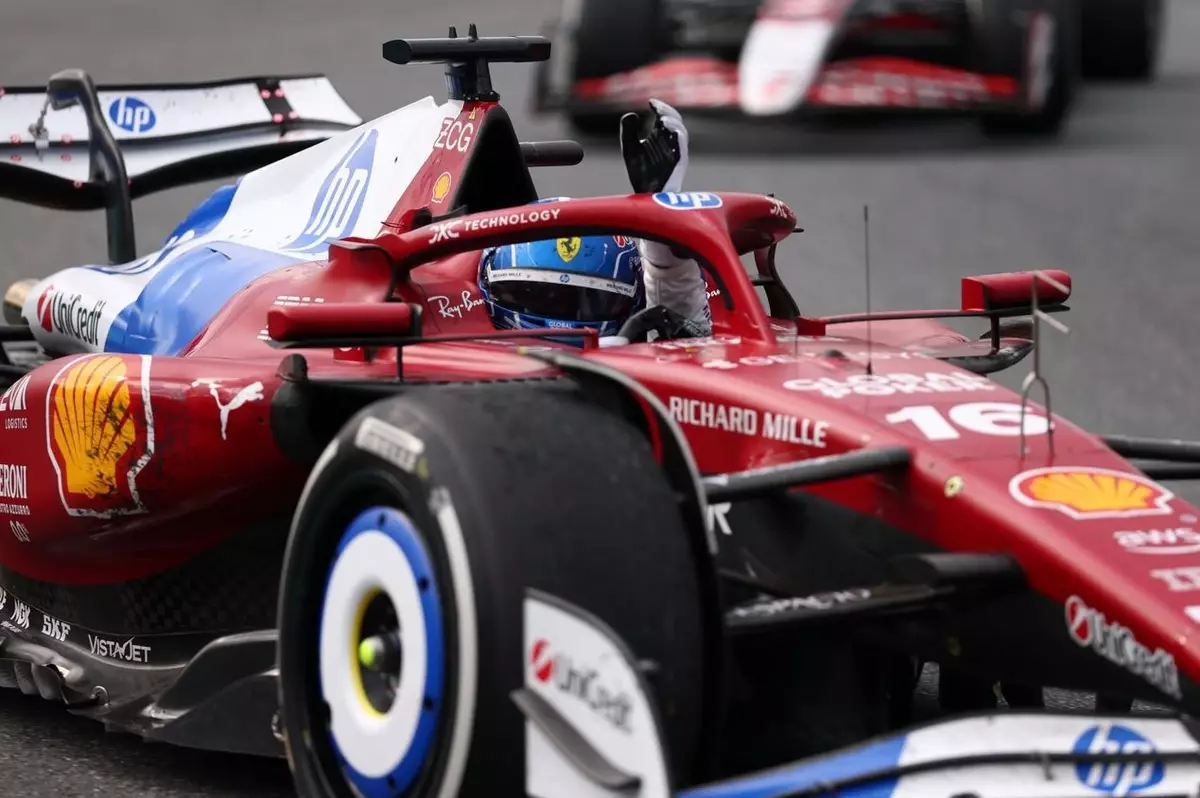The Miami Grand Prix this year witnessed not just thrilling racing, but also highlighted the intricate dynamics within the Ferrari team, particularly between Charles Leclerc and Lewis Hamilton. Their experiences on the track deepen our understanding of how delicate team strategies can make or break a race, far beyond mere tire choices or pit timings. It’s essential to appreciate how both drivers navigated these challenges under intense pressure — revealing a nuanced relationship that reflects the larger picture of team dynamics in Formula 1.
Leclerc’s statements following the race present an intriguing blend of professionalism and candidness. Despite the on-track tensions and Hamilton’s frustrations regarding tire strategies, Leclerc maintains that he holds “no bad feelings” toward his teammate. This sentiment is critical in a sport where morale can easily dwindle when drivers begin to see each other as rivals rather than collaborators. The conflict during the race drew a line not just between drivers, but also illustrated the growing pains of a team striving to rise to the top.
The Weight of Strategy and Communication
The crux of the issue during the Miami Grand Prix lay in the communication — or perhaps lack thereof — within the Ferrari team. Leclerc mentioned that a more detailed discussion prior to the position swaps could have potentially led to a more favorable outcome. This suggestion underscores the importance of synergy, where every layer of the team, from drivers to strategists, must be aligned. The decision-making process in high-stakes settings like F1 races can be game-changing, and when communication falters, it can lead to costly mistakes that challenge the principles of teamwork.
Leclerc’s reflection that “everything is tricky” reveals the inherent complexities of race day. Both drivers found themselves engaged in a battle for points while wielding different tire strategies — Leclerc on the harder compound and Hamilton on the softer, more aggressive medium tires. This situation was compounded by the pressures of competing not just against one another but also against the clock and their own team’s expectations.
Emotional Repercussions in Competitive Racing
It’s worth considering the emotional toll these strategic decisions take on drivers. Leclerc expressed frustration in his radio communications about tire management, especially as he struggled for position — a tough position amplified by having Hamilton, a formidable teammate and fellow competitor, nipping at his heels. This emotional landscape is often overshadowed by the technical aspects of racing but deserves closer examination.
Drivers are not only contending with physical exhaustion but also the mental strain of navigating intra-team dynamics that can shift unpredictably throughout the race. The reality is that even though teams strategize, human emotions often color the reality of decision-making. Leclerc’s admissions indicate a willingness to reflect on his behavior and recognize how the stress of racing can manifest in communication breakdowns.
A Call for Team Resilience
The Monegasque driver’s commentary did not shy away from addressing the need for Ferrari as a team to improve. “We need to do better,” he insists, acknowledging the mistakes made while simultaneously pointing out areas where they can regroup and strengthen their cooperation. This aspiration for resilience goes beyond a mere objective; it is a cornerstone of successful teamwork in any competitive field.
Leclerc’s determination to approach the situation constructively shows a depth of character that is crucial in high-pressure environments. For fans and analysts alike, these moments provide insight into how teams can become stronger by facing challenges head-on rather than allowing conflicts to fester.
In a nutshell, the Miami Grand Prix served as a potent reminder that racing isn’t just about speed or tire compounds; it’s also about cultivating a culture of communication, trust, and unity within teams. The complexity and emotional intensity of these situations are what make motorsports thrilling, but also challenging. Such revelations not only enrich our understanding of Ferrari’s current predicament but also prove critical for their future endeavors on the track. As we look ahead, the way teams respond to these trials will shape the trajectory of their success far more than the on-track results alone ever could.

